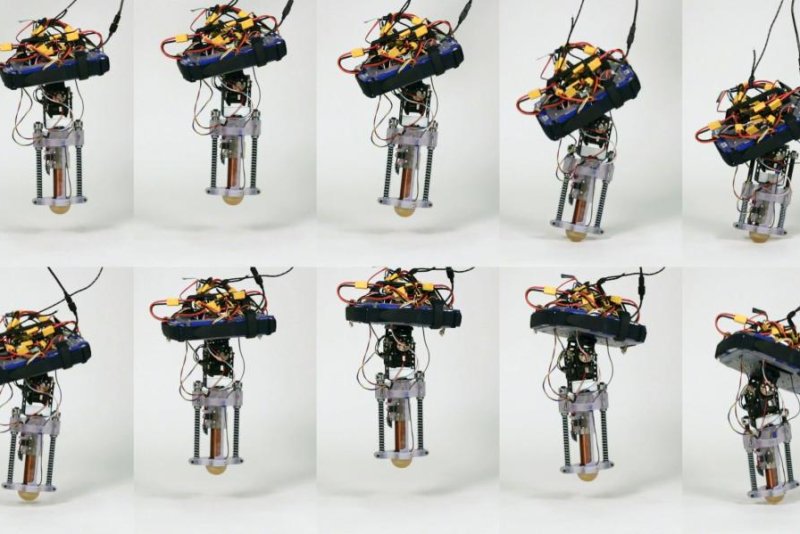A new robot designed by scientists at Disney Research is the first one-legged hopper to not require an external power source. Photo by Disney Research
PITTSBURGH, Oct. 6 (UPI) -- A team of engineers with Disney Research have designed and built the first tetherless hopping robot, capable of bouncing on a single leg without an external power source.
The robot's range of movement -- bouncing on a single leg -- limits its usefulness in the real world, but researchers believe untethering the robot will allow the battery-powered mechanism to be more easily incorporated into more complex robotic systems. Scientists say the single bouncing piston-like leg can be combined to form multi-leg robots.
For researchers at the Pittsburgh outpost of Disney Research, the tetherless robot was mostly a proof-of-concept exercise. The goal wasn't to build a robot for a specific task, but to focus on the software and structural design that allows a lightweight, battery-powered hopper to maintain its balance.
The end result is a Pogo stick-like robot measuring roughly a foot tall and weighing less than five pounds. Currently, the hopper can maintain its balance for roughly seven seconds, or about 19 hops. Researchers believe an upgrade to its computing power could allow the bot to hop for longer.
Most hopping robots rely on hydraulic power, which requires a motor. A new type of actuator allowed scientists at Disney to power their system using only battery power. The linear elastic actuator in parallel, or LEAP, takes its cues from a loudspeaker. Like the driver that amplifies a speaker's voice, the hopper's highly efficient actuator uses two compression springs.
Sensors on the robot's torso help the robot adjust the leg's angle on each new hop, allowing the hopper to maintain its balance.
The robot's designers are in Tokyo this week to present their bot at the International Symposium of Experimental Robotics, ISER 2016.
"While we fell short of our goal of continuous, indefinite hopping, we showed that such a gait is possible for an untethered robot for short periods of time," researchers wrote in a paper describing their work. "In the future ... we plan to redesign the LEAP mechanism to be more modular and compact for use in a multi-legged robot."















